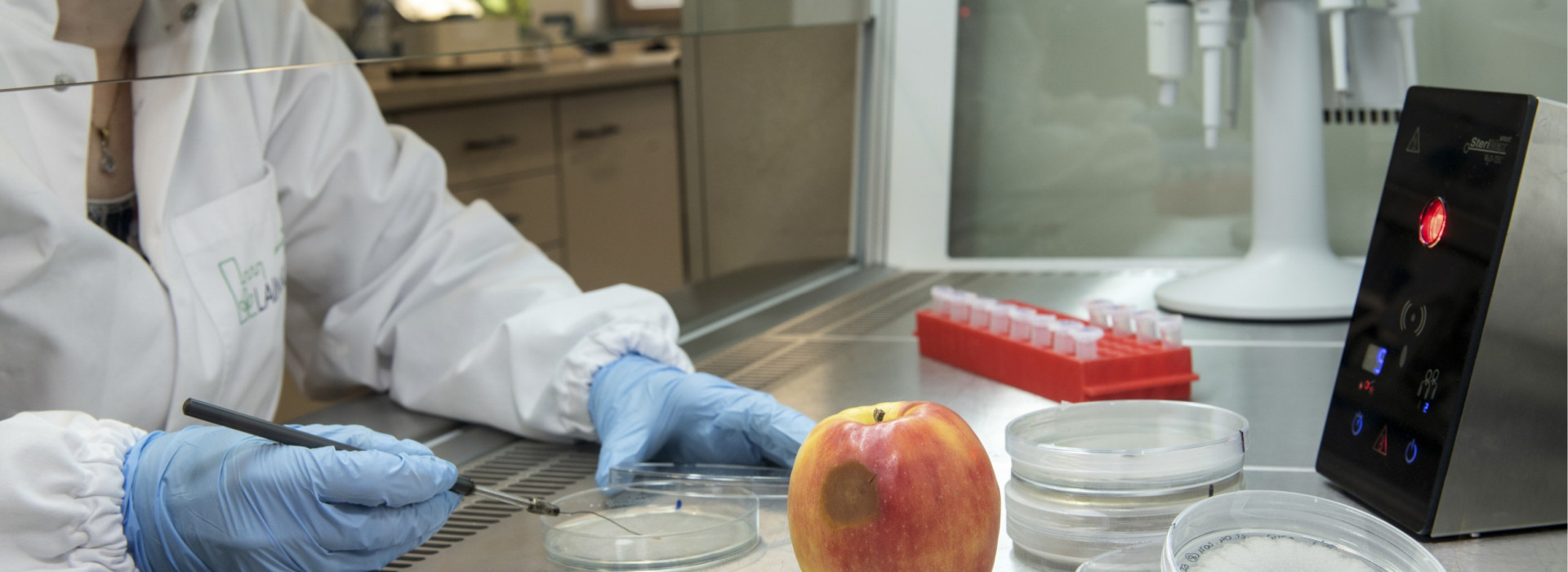In early autumn of the year 2020, a rapid increase of necrotic leaf spots was observed in individual South Tyrolean apple orchards. Within a very short time, pronounced yellowing of the leaves known as chlorosis (Fig. 1) and a massive, premature shedding of the leaves was also observed in the affected orchards. At almost the same time, reddish-brown spots – frequently surrounded by a purplish halo (Fig. 2) – manifested on the fruit. Because similar symptoms had previously been unknown in South Tyrol, comprehensive phytopathological investigations were carried out at the Laimburg Research Centre to identify the causative agent of this symptomatology.
Microbiological and molecular-biological identification of the pathogen
To isolate the pathogen, tissue samples of necrotic leaves and fruit spots were taken and incubated on nutrient media in the laboratory. After just a few days, a majority of the samples showed fungal growth with consistent morphology. Examination of the fungal isolates’ conidiospores by light microscopy, an assignment to the genus Colletotrichum sp., the asexual form of Glomerella sp., was made. By sequencing a specific DNA fragment, the pathogen was preliminarily identified as Colletotrichum species. Because of the great genetic similarity of the different Colletotrichum species, however, further molecular studies are needed to unambiguously identify the fungus.



